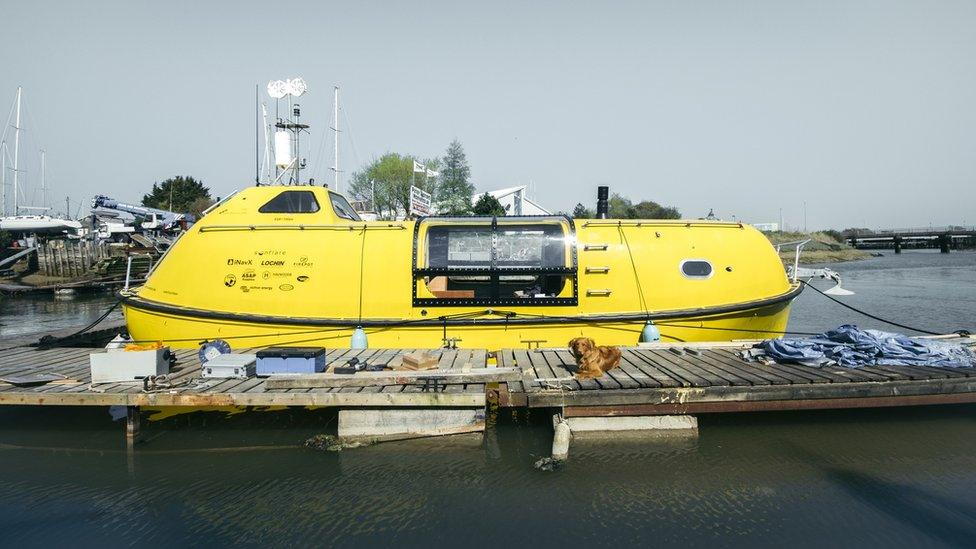New life in the sun for CalMac lifeboats
- Published

The former lifeboats are now based in Mozambique's Topuito Isles
Retired lifeboats from a CalMac ferry have been shipped to sunnier climes to serve Africa's tourist industry once the Covid crisis is over.
The boats, which hold up to 150 people, were removed from MV Isle of Lewis when new upgraded equipment was fitted.
They have now been sold for a five-figure sum to a tourist company in Mozambique.
Other former CalMac lifeboats have been repurposed as a polar expedition vessel and a houseboat in the Netherlands.
The latest surplus lifeboats had previously served the Ullapool, Stornoway and Barra ferry routes.
Their new role will see them transferring tourists, once the coronavirus pandemic abates, in the Topuito Isles along the northern coast of Mozambique.

It was converted by architects Guylee Simmons and David Schnabel and renamed Stødig
John Salton, fleet manager at CMAL, which owns the CalMac fleet, said: "We're updating a number of the vessels in our fleet with modern safety equipment, which means the lifeboats are no longer needed.
"However, they still have plenty of life left in them and we were keen that they continued to operate.
"The boats were the largest commercial lifeboats built at the time, so they will be perfect for the tourist industry."
In the last two years, lifeboats have also been removed from the MV Caledonian Isles and MV Clansman to make way for modern equipment.
A tour around Stødig
In 2018 a lifeboat from MV Clansman was bought by architects Guylee Simmons and David Schnabel who spent a year converting it for a polar expedition.
Along with Guylee's dog Shackleton they set off from the UK last year on the boat, now renamed Stødig to explore the Norwegian coast, heading up into the Arctic Circle.